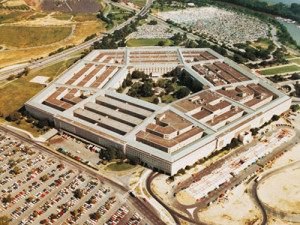
Congress uses power of purse to trim DoD civilian hiring
The budget deal cuts $250 million in civilian headquarters and mandates a report from the inspector general.
Congress is holding the Defense Department’s feet to the fire when it comes to actually making civilian headquarters cuts and properly estimating the number of civilian workers it needs.
The 2016 omnibus appropriations bill mandates more than $250 million in headquarters cuts for what lawmakers call “overestimation of civilian full-time equivalent (FTE) targets and streamlining management headquarters.”
“It basically says you have more FTE slots on the book than you are filling,” Katherine Blakeley a budget research fellow at the Center for Strategic and Budgetary Assessments told Federal News Radio.
The streamlining part deals with the ever-expanding workforce of DoD’s headquarters staff.
Those cuts are deepest in the budget for the Air Force operations and maintenance workforce, which Congress reduced by $110 million. The Defense Information Systems Agency, the Defense Security Service and many other agencies also saw decreases in funding for their respective workforces.
The appropriations act also directed more oversight over DoD’s estimations of needed FTE levels by asking the DoD Inspector General to provide a report on how to improve management of the civilian compensation program, explore factors influencing average salary and better control salary volatility. The report also will examine how to standardize the types of growth in pay rates versus program growth and what steps DoD should take to create a budget that accurately captures the true cost of the civilian workforce.
DoD has taken flack for its bloated civilian workforce and its lack of planning to reduce waste in that area.
Defense personnel experts told the Senate Armed Services Committee during two hearings in November and December that the Pentagon is spending more money and getting less in return.
The Joint Staff has burgeoned to more than 4,000 employees, Office of Secretary of Defense to 5,000 and the combatant commands have grown to more than 38,000, former DoD Undersecretary for Policy Michele Flournoy said.
Other experts said the large workforce is making the department sluggish.
“The growth in Defense infrastructure has been continuous. The tendency has been to add, rather than subtract. As we have added more staff, more layers and more infrastructure, we have slowed the decision process, expanded the number of players and made the overall system more risk adverse, at a time when we need to take more risk and make quicker decisions,” said Arnold Punaro, a member of the Defense Business Board, at a congressional hearing.
Blakeley said DoD and Congress have both been trying to deal with the issue for roughly the last five years .
DoD put out a memo this summer directing a 25 percent cut across the board to its headquarters functions. The 2014 defense authorization act also asked DoD to come up with a plan for reducing staff and achieving savings through reductions.
“There’s been a broad consensus that particularly in the last six to eight years there has been a lot of duplications of effort,” Blakeley said. “It’s really hard to figure out where DoD is going to [cut] because it requires getting into the nitty-gritty of every single office and a lot of ways it’s basically a deep dive into a potential reorganization or restructuring from the ground up. … One of the things Congress has complained about in the past in particular has been that you cut staff and headquarters but [the staff] ends up getting shuffled around somewhere else.”
Additionally, a Dec. 23 Government Accountability Office report found that DoD is not addressing its requirements from the 2013 Defense authorization act.
“Analysis indicates that the[headquarters] reductions may not achieve the savings required by [the defense authorization act], and DoD has not provided an explanation of the reasons for the projected shortfall in achieved savings in the contractor workforce,” the report stated. The department’s 2016 budget “shows a planned increase in spending on the contractor workforce that, if carried out, will mean that about half the reduction to contractor workforce spending that DoD has identified as its goal through fiscal 2017 remains to be achieved.”
Flournoy said DoD offices are reluctant to let go of their workforce because they want their own teams to weigh in on decisions, even if those decisions are not part of an office’s mission.
For example, the policy building system in DoD consists of the Office of the Secretary of Defense (OSD), the Joint Staff and the combatant commands. The Joint Staff or the combatant commands, however, will have more policy staff than the OSD policy office, which has the policy lead.
Flournoy added instead of focusing on their own respective silos, each entity has hired a staff to do the job of the other two leadership branches. Flournoy said all of the competing voices undermine the department’s ability to response quickly and strategically to challenges.
Copyright © 2025 Federal News Network. All rights reserved. This website is not intended for users located within the European Economic Area.
Scott Maucione is a defense reporter for Federal News Network and reports on human capital, workforce and the Defense Department at-large.
Follow @smaucioneWFED





